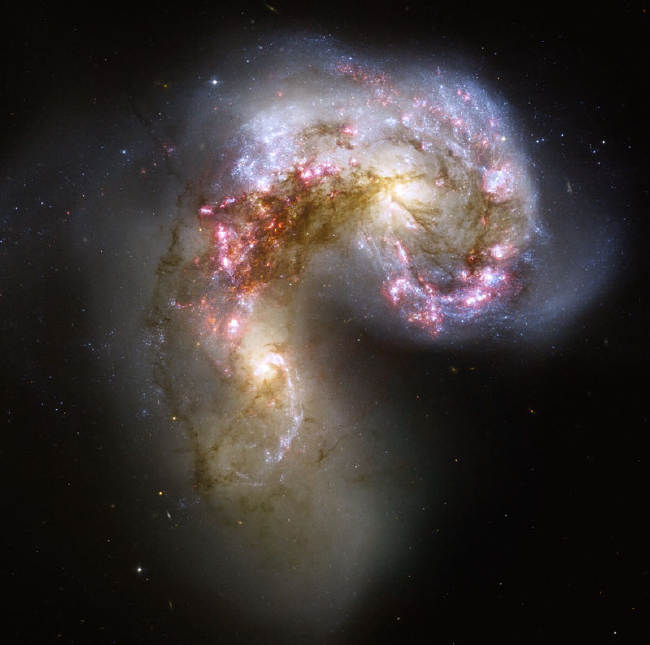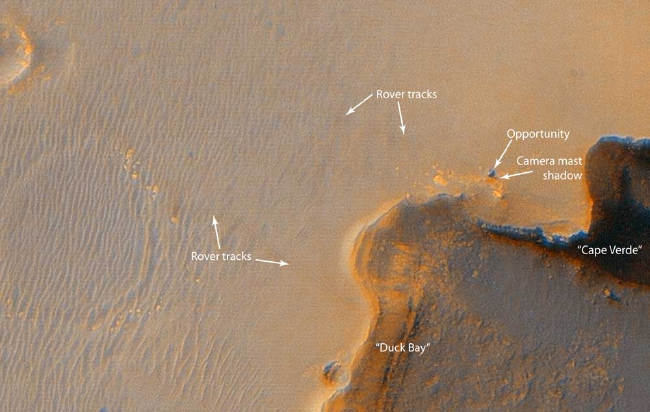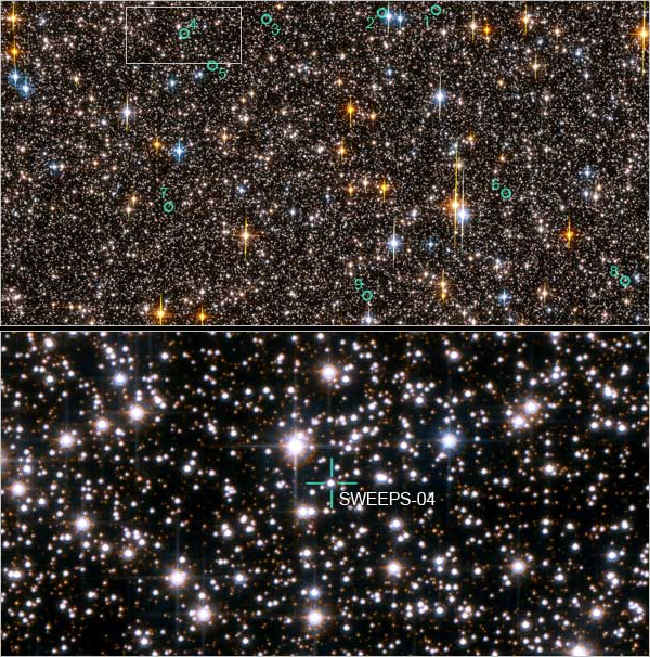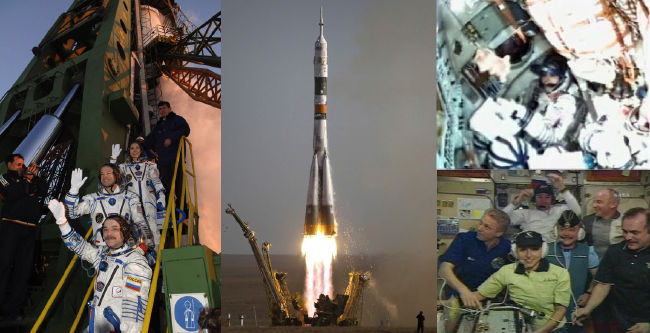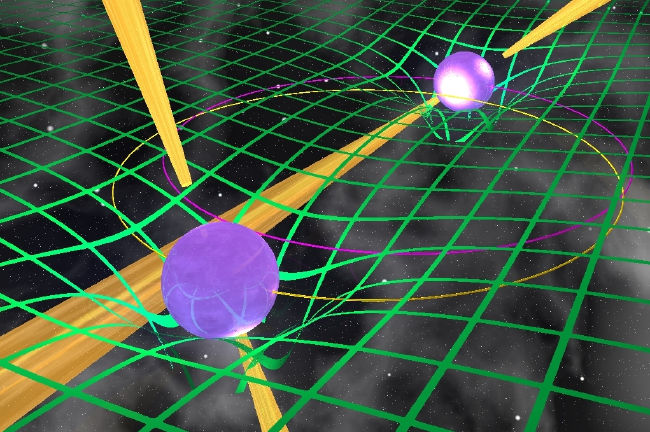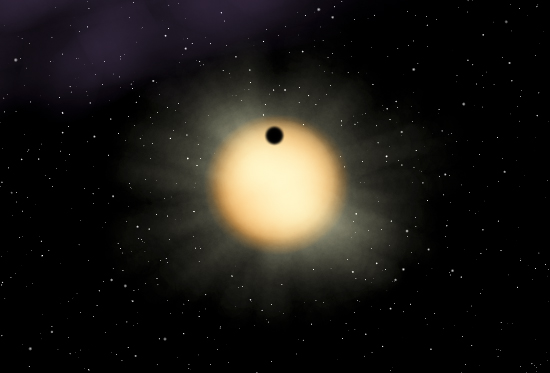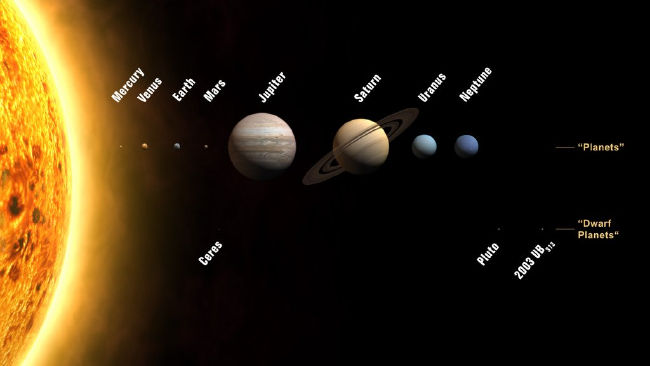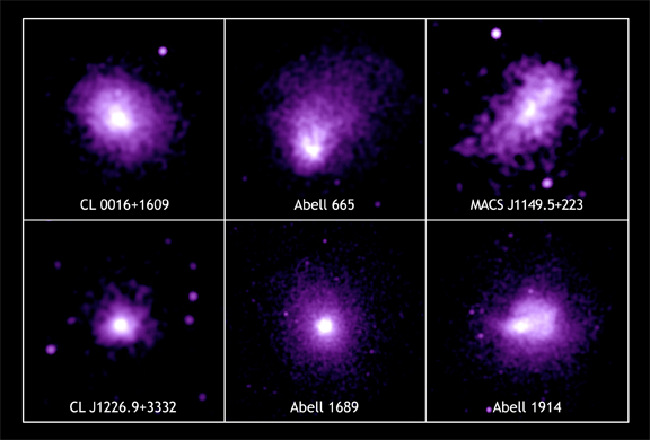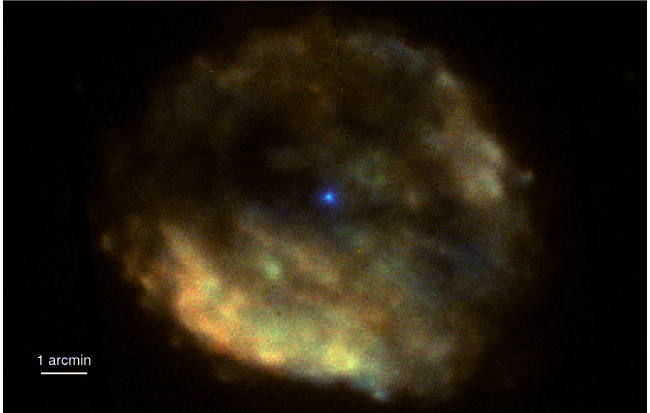Well, the question is: What is a planet? This has turned out to be a surprisingly difficult question to answer because of scientific, cultural and historic issues. Nonetheless, after two years of deliberations, a panel of seven astronomers, writers and historians believe that they have come up with an answer. They believe that:
"A planet is a celestial body that (a) has sufficient mass for its
self-gravity to overcome rigid body forces so that it assumes a
hydrostatic equilibrium (nearly round) shape, and (b) is in orbit
around a star, and is neither a star nor a satellite of a planet."
How does this affect the way we see our own Solar System? For starters, there are 12 Solar System objects that already fit this new definition: Mercury, Venus, Earth, Mars, Ceres, Jupiter, Saturn, Uranus, Neptune, Pluto, Charon and 2003 UB313. Ceres, discovered by Giuseppe Piazzi on New Years day in 1801, was originally classified as a planet but then re-classified as the first of a new class of object known as an asteroid - it has remained under this classification for over 150 years. However, Ceres is sufficiently massive and spherical to be re-instated as a planet under the new definition.
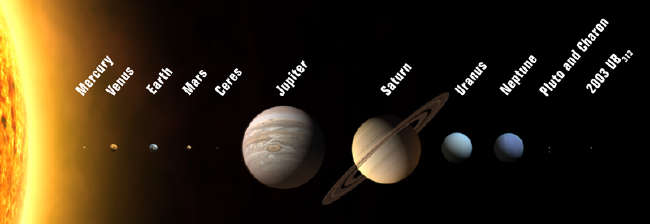
The 12 planets of our Solar System according to the new definition of a planet being proposed at an IAU meeting on August 24th.
Image Credit: IAU/Martin Kornmesser.
Pluto, a world that has had its planethood questioned over the past few years, will formally maintain its planetary status under the new IAU definition. Even more surprisingly, it will become the first "double planet". Its moon Charon is so large in comparison to Pluto that the centre of mass of the system lies between the two worlds. As a result Charon is now also considered to be a planet.
The object that reinvigorated the whole planet debate, 2003 UB313, will also be given planetary status under the new definition. 2003 UB313, more affectionately known as "Xena", was discovered in 2005 and orbits the Sun at over twice the distance of Pluto. The reason Xena threw a spanner in the works was because of its size - it was estimated to be larger than that of Pluto. Using logical reasoning that suggested that if Pluto was a planet then Xena too should be defined as a planet.

Other would-be planets that may meet the criteria of the new definition of a planet.
Image Credit: IAU/Martin Kornmesser.
... but wait there's more! Not only do you get ex-asteroid, an ex-planet, an ex-satellite and a brand new would-be world but we'll throw in an entire set of collectors-edition, colour-coordinated rocky and icy worlds. As you may have guessed, the new IAU definition will open the flood gates for a host of new "planets". Currently there are at least a dozen further candidate objects that may be re-classified as planets. These include other asteroids such as Vesta, Pallas and Hygiea which may follow the path of Ceres into planethood based on their round'ish shapes. Others include the more recently discovered outer Solar System objects such as Sedna, Quaoar, Orcus, Ixion and Varuna.
The IAU draft resolution will also be defining a new official term - a "Pluton". Plutons reside in orbits around the Sun that take over 200 years to complete ie. they have orbits beyond that of Neptune. Some of the objects that fall under the Pluton definition include Pluto, Charon, 2003 UB313, Sedna, Quaoar, Orcus, Ixion and Varuna.
The IAU will vote on a draft definition of what constitutes a planet at an IAU meeting in Prague on the 24th of August.







 RSS (Subscribe)
RSS (Subscribe)